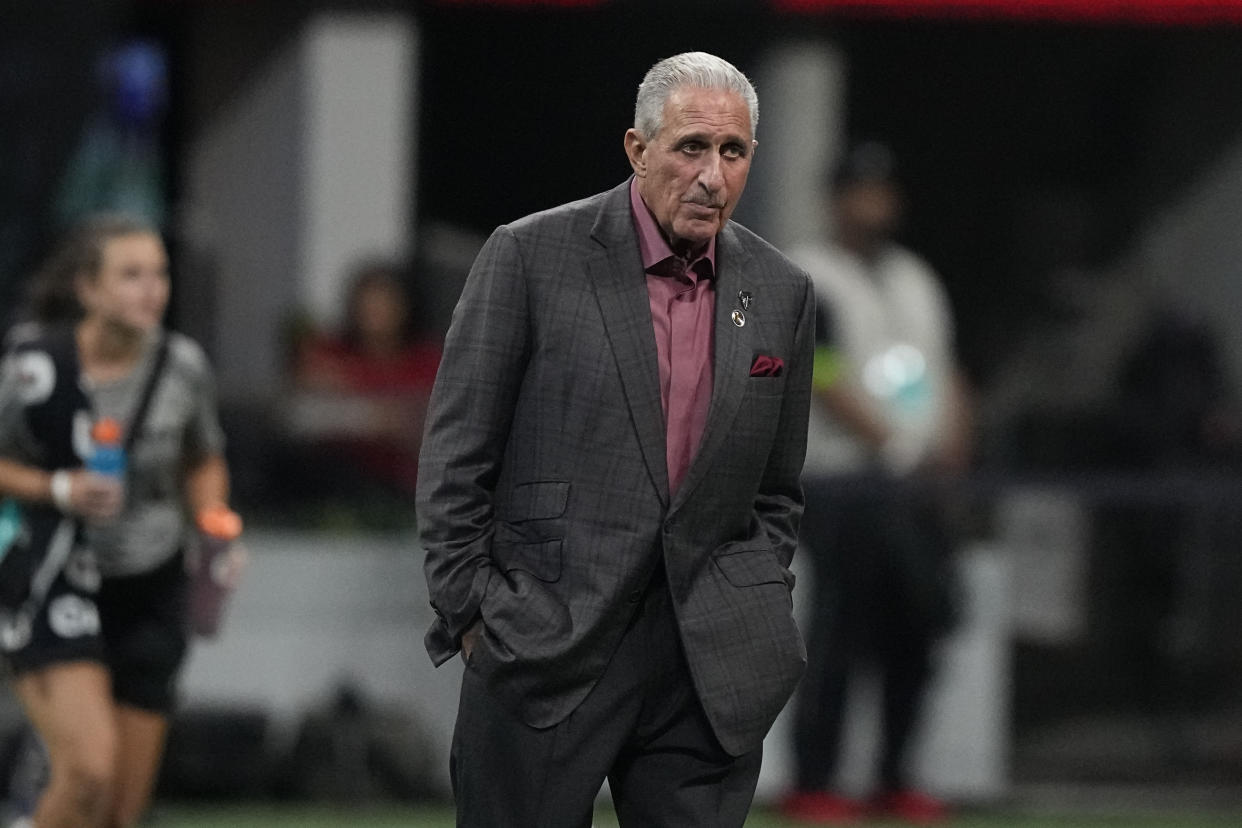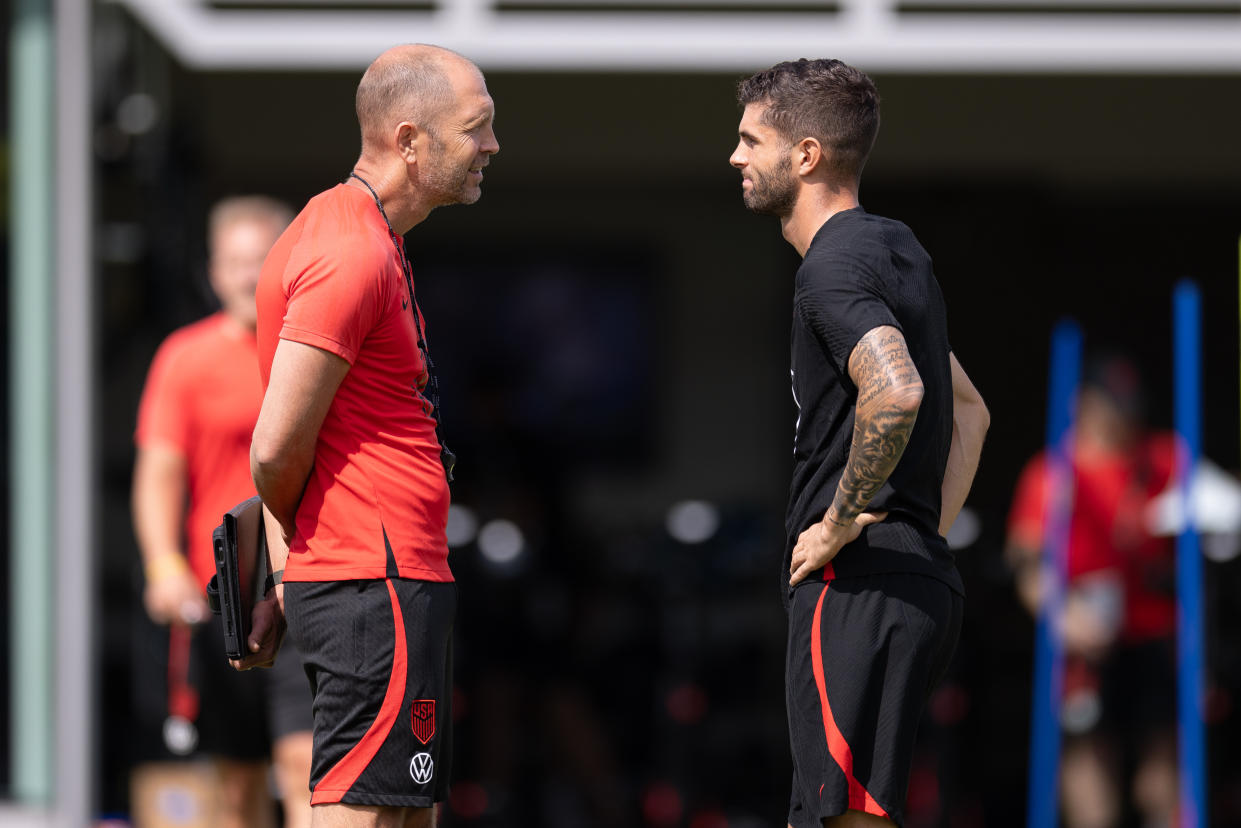U.S. Soccer plans to build a national training center and make a landmark move to Atlanta

The U.S. Soccer Federation plans to build a national training center in Atlanta, a first-of-its-kind facility that will become the federation's new headquarters and centralize most of its operations.
U.S. Soccer has been based in Chicago since the early 1990s, but its national teams have held training camps and games in dozens of different cities across the country. The Atlanta facility, which will include everything from fields to office space, will become an all-in-one hub for the federation's commercial staff, youth national team camps, sporting operations and much more.
The senior men's and women's national teams, dubbed the USMNT and USWNT, will almost certainly still travel coast to coast, to various markets, for games. But they will now have a home base, with "uninterrupted access to elite infrastructure for training, development, recovery and performance analysis," according to U.S. Soccer.
The training center "will also host youth tournaments, soccer community conferences and will be a gathering place for the broader soccer ecosystem," the federation said.
U.S. Soccer has not yet selected a specific site in metro Atlanta. It doesn't yet have a timeline for construction. But its board of directors approved the plan Friday, paving way for the announcement, which represented the culmination of discussions that accelerated in 2022 and 2023 but date back several years.
U.S. Soccer chooses Atlanta after years of discussions
A national training center had long been seen as desirable by USSF officials. Globally, many successful soccer federations have one. The central questions for U.S. Soccer were twofold: Does a singular hub make sense in a nation this big? And with so many state-of-the-art facilities throughout the nation, was it worth spending hundreds of millions of dollars to construct one specifically for the national teams?
“The reality is, this is a massive country,” then-USSF president Carlos Cordeiro said in 2019. “We are as big, if not bigger, than all of Europe together. We are one federation for all of that. So … do we have one training center? Do we have multiple training centers? Don’t assume that everything is going to be in one location. It could be in one location. It could be in three or four locations. It’s a compromise between having everybody together versus the reality.”
Both questions were answered, in part, by Arthur Blank, the Home Depot co-founder turned philanthropist. Blank, who owns the NFL's Atlanta Falcons and Major League Soccer's Atlanta United, pledged $50 million to the project. His contribution and other corporate partnerships helped sway U.S. Soccer leaders — most notably CEO JT Batson — to choose Atlanta over Cary, North Carolina, the other finalist.

Batson, a Georgia native who became CEO last fall, has been traveling to Atlanta to meet with potential benefactors and explore potential locations for the facility. He helped secure a partnership with Coca-Cola, another Atlanta-based corporate giant, which "played an important role in bringing the [facility] to the company's hometown," U.S. Soccer said.
Batson is now leading the search for the specific site; a final decision will be made in January, and construction could begin later next year. It's unclear when the facility might open — and unclear if the federation would want to move in the months leading up to the 2026 men's World Cup, which it is co-hosting.
How will the national training center be used?
In Friday's announcement, U.S. Soccer began to outline its vision for the facility, which, most importantly, will serve all of U.S. Soccer's national teams. The USWNT and USMNT are just two of 27. There are 16 youth teams (YNTs) and nine "extended national teams" (ENTs) — two futsal teams, two beach soccer teams, two cerebral palsy teams, two deaf teams, and one co-ed power soccer team (for powerchair users).
The training center will perhaps be most impactful for that latter group, with part of Blank’s contribution "particularly [supporting] the Cerebral Palsy (CP), Deaf, and Power Soccer National Teams, including thoughtful design of locker rooms and training facilities to maximize accessibility for players," U.S. Soccer said.
The big unknown, though, is how the senior national teams will use the national training center once it opens.
USMNT head coach Gregg Berhalter had previously advocated for it. Last January, as U.S. Soccer explored possibilities, he called the prospect "beneficial ... not only for consistency of the senior team, but also to have all the other teams." He cited visits to England's national training center, St. George's, where youth and senior national teams train before traveling elsewhere for games. "It’s a laboratory, man," Berhalter said. "You see all the coaches interacting, you see the teams there, and really, the players feel at home."
U.S. Soccer tried to recreate those coach interactions at its offices in Chicago. Late last decade, it began requiring all coaches and key employees to move to Chicagoland (or at least spend significant time there). The problem, of course, was that Chicago didn't have fields on which they could work. Training camps were almost always held elsewhere, in warmer climates, at better facilities.

The Atlanta facility, on the other hand, might allow the federation to replicate some aspects of St. George's, or France's Clairefontaine, or Italy's Coverciano. The USMNT and USWNT could gather there, train there, then fly to other cities a day or two before friendlies or World Cup qualifiers. And youth teams could train there simultaneously, one field over.
The training center could be bypassed for truncated camps — the standard international window often requires players to fly in on a Monday, then play on a Friday, then travel for another game early the following week — but it will likely host extended camps prior to major tournaments.
It will almost certainly have indoor fields, or heated and shaded fields, making it a viable year-round home. And its location, not far from the busiest airport in the world, is convenient for European-based players — many of whom might connect through Atlanta or another East Coast airport to get to camp in another U.S. city anyway.
That was another reason Atlanta became U.S. Soccer's city of choice. Over the years, the federation had opened other specialized hubs. More than two decades ago, it partnered with the Los Angeles Galaxy to build one in Carson, California, adjacent to the Galaxy's new stadium. They called it the “National Training Center," and the USMNT often held winter camps on its 125-acre campus and nine plush training fields.
In 2018, the federation partnered with another MLS team, Sporting Kansas City, to build the "National Performance Center," also called the "National Development Center," primarily to house coaching education programs.
But Kansas City was often too cold and too remote for USMNT or USWNT camps. Los Angeles was too far from Europe, and besides, the Galaxy, not U.S. Soccer, were the primary owner and operator of the facility.
The Atlanta project will bring everything under one roof, and create a physical space for the often-intangible pipeline from youth teams to senior teams to flourish.
“I think this will be amazing for us," USMNT midfielder Weston McKennie said in a statement published by U.S. Soccer. "Having somewhere to call our home and having a place where all U.S. Soccer national teams can train and develop — it’s always good to have that because it’s similar to academy systems, where young kids can see what they could be and where they can go, and it’s all very close knit. You see the best countries around the world have their own facilities, so it’ll be nice for us to have a home base where we can come together."
